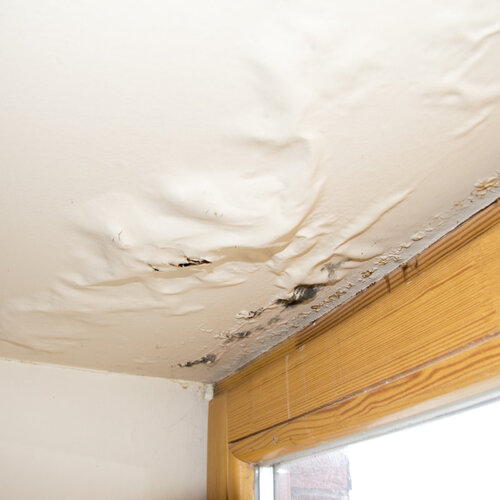Find Out the Most Frequent Origins Leading To Water Drips Within Your Residence
Find Out the Most Frequent Origins Leading To Water Drips Within Your Residence
Blog Article
What are your opinions concerning Most Common Causes of Leaky Pipes?

Leaks not only cause waste of water but can additionally trigger unneeded damage to your residence as well as promote undesirable natural development. Unfortunately, water leaks might go unnoticed given that the majority of the pipework in our home is hidden. By recognizing and also looking for everyday scenarios that trigger leakages, you can shield your home from future leaks and unneeded damages. Today, we will certainly check out six leakage triggers that may be causing your pipelines to trickle.
Encroaching origins
The majority of water leakages begin outside your home instead of inside it. If you see an abrupt reduction in water stress, say in your faucet, take time to head out and examine your lawn. You could observe wet patches or sinkholes in your lawn, and that might mean that tree roots are invading water lines creating water to seep out. You can have your plumber check for invasion, specifically if you have trees or hedges near your building.
Corroded water supply
This may be the cause of discoloration or warping on your water pipelines. If our plumbing system is old, consider changing the pipes given that they are at a higher danger of deterioration than the more recent designs.
Defective Pipeline Joints
Pipeline joints can degrade over time, resulting in water leaks. If you have loud pipes that make ticking or banging noises, particularly when the hot water is transformed on, your pipeline joints are most likely under a great deal of stress.
Immediate temperature level changes.
Extreme temperature adjustments in our pipes can cause them to increase and also contract all of a sudden. This expansion and contraction might trigger cracks in the pipelines, specifically if the temperature are below freezing. It would be best if you watched on how your plumbing functions. The existence of the previously mentioned circumstances often suggests a high risk.
Poor Water Connectors
Sometimes, a leakage can be brought on by loosened pipes and also pipelines that supply your appliances. More often than not, changing is what creates the loosened water Connections. You might locate when it comes to a washing device, a hose might spring a leak because of shaking throughout the spin cycle. In case of a water connections leakage, you may notice water running straight from the supply line or puddles around your devices.
Obstructed Drains
Clogged drains pipes could be aggravating and inconveniencing, yet they can often wind up creating an overflow resulting in burst pipelines. Keep getting rid of any kind of materials that may go down your drains pipes that might obstruct them to prevent such hassles.
All the above are causes of leakages yet not all water leaks result from plumbing leakages; some leakages might originate from roof covering leaks. All leaks need to be repaired promptly to prevent water damage.
Leakages not just trigger waste of water but can additionally create unnecessary damage to your residence as well as promote undesirable organic development. By looking and also recognizing for daily situations that trigger leaks, you can shield your house from future leakages and unneeded damage. Today, we will look at 6 leak causes that might be creating your pipes to trickle.
At times, a leakage can be triggered by loose hose pipes as well as pipes that provide your appliances. In case of a water connections leak, you may observe water running directly from the supply line or pools around your home appliances.
How To Check For Water Leak In Your Home
How To Check for Leaks
The average household's leaks can account for nearly 10,000 gallons of water wasted every year and ten percent of homes have leaks that waste 90 gallons or more per day. Common types of leaks found in the home are worn toilet flappers, dripping faucets, and other leaking valves. These types of leaks are often easy to fix, requiring only a few tools and hardware that can pay for themselves in water savings. Fixing easily corrected household water leaks can save homeowners about 10 percent on their water bills.
To check for leaks in your home, you first need to determine whether you're wasting water and then identify the source of the leak. Here are some tips for finding leaks:
Take a look at your water usage during a colder month, such as January or February. If a family of four exceeds 12,000 gallons per month, there are serious leaks.
Check your water meter before and after a two-hour period when no water is being used. If the meter changes at all, you probably have a leak.
Identify toilet leaks by placing a drop of food coloring in the toilet tank. If any color shows up in the bowl after 10 minutes, you have a leak. (Be sure to flush immediately after the experiment to avoid staining the tank.)
Examine faucet gaskets and pipe fittings for any water on the outside of the pipe to check for surface leaks.
Undetected water leaks can happen without the home or business owner even realizing. If you suspect a water leak, but not able to find the source. It is time to contact a professional water leak detection service, The Leak Doctor.
How To Find a Water Leak In Your Home
https://www.leakdoctor.com/blog/How-To-Check-For-Water-Leak-In-Your-Home_AE197.html

I was brought to that editorial about Common Water Leaks In House from an acquaintance on our other site. Appreciated our posting? Please share it. Let another person discover it. Thank you for your time invested reading it.
Got trouble? Ring! Report this page